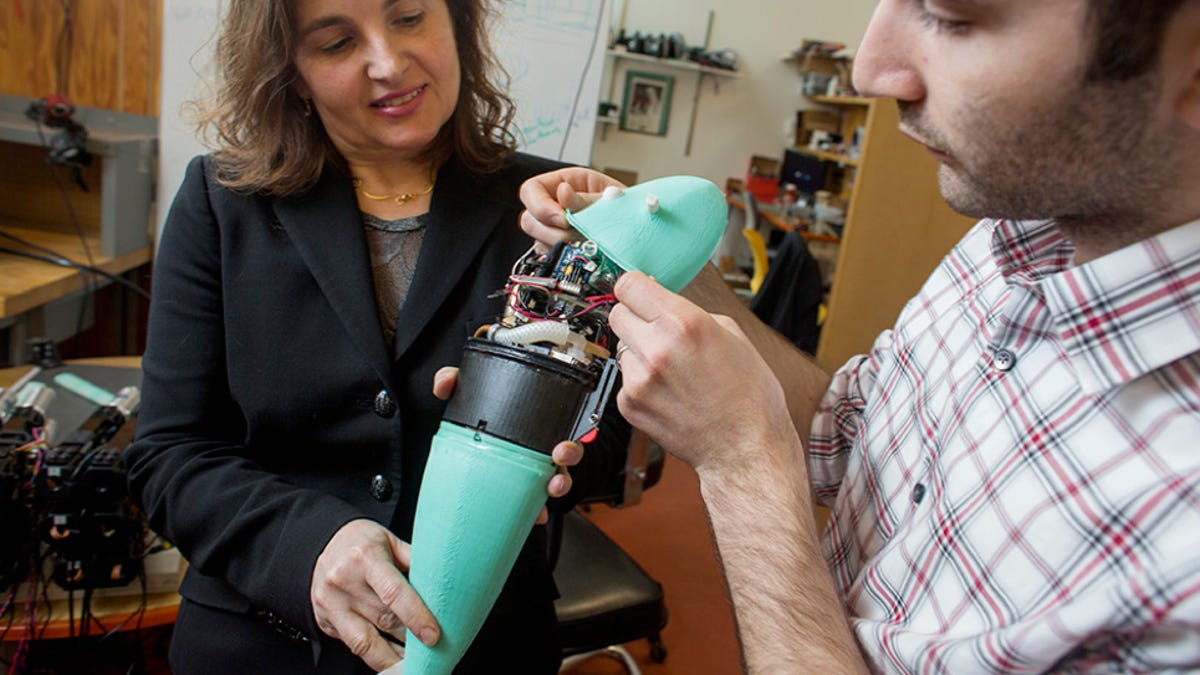MIT's super-speedy robot fish makes flashy escape
Researchers have created a "soft" robofish powered by carbon dioxide that can swim around on its own and execute a critical escape maneuver just as fast as a real fish.

Some robot fish we've seen wouldn't be able to escape a predator if their fins depended on it.
Enter the new fish-shaped "soft robot" developed by Andrew Marchese, a graduate student in MIT's Department of Electrical Engineering and Computer Science. It can execute an escape maneuver called a "C-turn" in about 100 milliseconds, matching the speed of fish in the wild. Such swiftness is one of the things that most sets this robofish apart.
Soft robots are machines that have gushy exteriors and move around through the use of fluids or gases pumping through vein-like internal tubes. They're of interest because they don't hurt when they bump into people (nor do they scratch the furniture). "We're excited about soft robots for a variety of reasons," Daniela Rus, one of the researchers who designed and built the fish, said in a statement. "As robots penetrate the physical world and start interacting with people more and more, it's much easier to make robots safe if their bodies are so wonderfully soft that there's no danger if they whack you."
The fact that the fish can perform an escape maneuver "is really important for the field of soft robotics," Marchese said in the below MIT video about the invention. "It shows that soft robots can be both self-contained and capable of high performance. The maneuver is so fast and it's got such high body curvature that it shows soft robots might be more capable than hard robots in some tasks."
The robofish consists of a hard control module that stores the electronics and a carbon dioxide canister in its head and abdomen. From here, two inflatable tubes travel down each side of the fish to its tail. These tubes have nozzles that feed them carbon dioxide. The opening of the nozzle controls how fast the fish moves, while the amount of tube inflation controls the angle at which the fish changes direction. The electronics module also contains a receiver that allows it to be controlled wirelessly, and the entire robot is covered in soft, waterproof silicone rubber made from a 3D-printed mold.
The novel gas-though-tube-controlled movement differs from other robotic fish we've seen, like the one invented at the U.K's University of Bath, which moved thanks to an undulating fin on its underside.
Rus, director of MIT's Computer Science and Artificial Intelligence Laboratory, said a normal robot with hinged joints couldn't possibly move so fast and that the unique propelling mechanism of the robofish -- inflating and deflating internal tubes with carbon dioxide -- gives it a distinct advantage over its land-dwelling clunky cousins. "The fact that the body deforms continuously gives these machines an infinite range of configurations, and this is not achievable with machines that are hinged," she said.
Currently, the robofish can only swim for a few minutes before it runs out of gas. The researchers are working on a new version that should last up to a half-hour and will use water to pump through the tubing in the fish's body to propel it.
Of course, the MIT crew didn't build their robot with the thought of lazy fish-tank owners in mind. In addition to pushing along the science of soft robotics, Rus believes the invention can also help wildlife scientists conduct research, by having it swim along with schools of fish while collecting data about their movements and habits like this robofish invented by an engineering professor at the Polytechnic Institute of New York University.
Additionally, "we also view this research as a first step toward creating soft robots that can operate in human-centered environments," Marchese told Crave. "We are especially interested in developing a new kind of soft hand and manipulator that embodies the materials and principles demonstrated by the soft robot fish."

